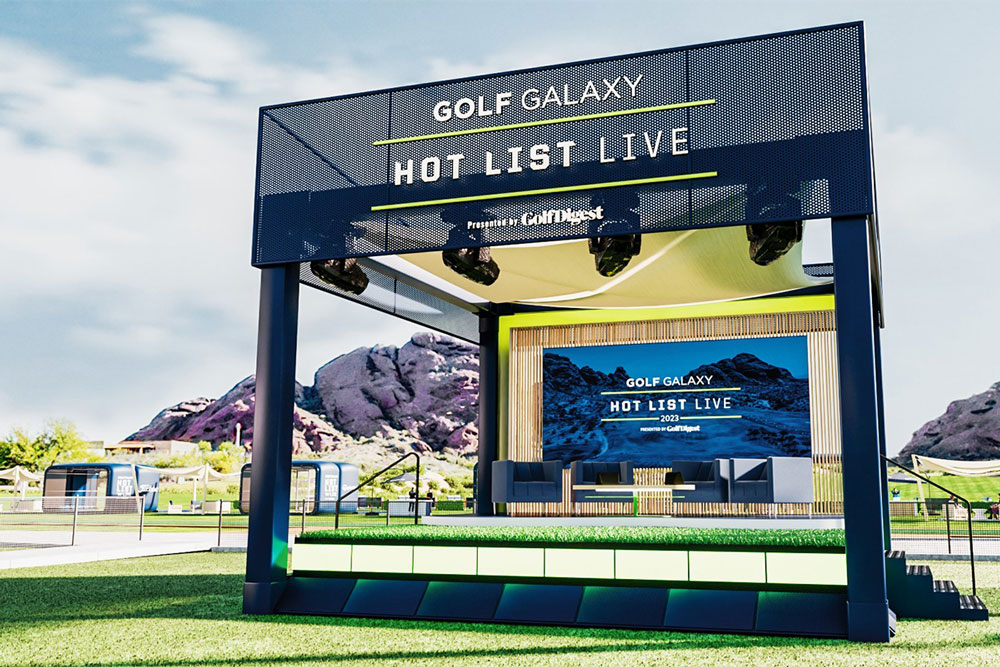Watch as a cartoon band scales the Louis Vuitton store and serenades you as you enter. Step into a world where you are placed into the middle of a company’s supply chain process to better understand how the products you’re buying are sourced. Play a round of nine on one of the world’s greatest golf courses while never leaving the sports retail shop.
Those are just a few examples of how brands are going all-in on product engagement, transforming stores into playgrounds where customers can test gadgets, try out novelties, and immerse themselves in playful multi-sensory experiences.
Bye-Bye Boring, Hello Retailtainment
Let’s face it; boring retailers are a dying breed. Brands will win when they make shopping feel more like an outing than a chore. Retail is supposed to be fun, remember? Modern consumers expect more, and they are being greeted with immersive destinations that encourage play and exploration, or “retailainment.”
In his book, Enchanting a Disenchanted World: Revolutionizing the Means of Consumption, author George Ritzer describes “retailtainment” as the “use of ambience, emotion, sound and activity to get customers interested in the merchandise and in a mood to buy.”
Retailers must recognize the importance of developing a consumer-centric retail strategy that offers unique, memorable experiences to attract customers— and to get them sharing their experiences on social media to boost brand awareness and sales.
Gone are the days when visual merchandising was enough to stimulate shoppers, according to Garry Williams of The Drum. With 63% of shoppers desiring multisensory experiences for total immersion, brands like Nike are appealing to shoppers’ senses (and wallets).[/vc_column_text][/vc_column][/vc_row][vc_row padding_top_multiplier=”” padding_bottom_multiplier=””][vc_column][movedo_empty_space height_multiplier=”2x”][movedo_title line_type=”line”]Out-of-This-World Technology[/movedo_title][vc_column_text]
A growing wave of retailers is now immersing customers in virtual worlds through the enchanting realms of Augmented Reality (AR) and Virtual Reality (VR), redefining the very essence of the shopping experience.
Using both types of technologies, retailers can deliver unique customer experiences that go beyond real-world capabilities, offering them a competitive advantage against not only other brick and mortar shops, but e-commerce as well.
At Nike stores, customers can scan products to learn more information or can enter a virtual reality world where they step into Nike’s supply chain to better understand how the products they are considering are sourced and developed, while the brand’s SNKRS app offers exclusive sneaker drops through gamified experiences.
Nike is among forward-thinking companies taking advantage of the enormous opportunity to use advanced technology like VR and AR in retail. In fact, according to an e-commerce technology survey, 41% of consumers want opportunities for greater personalization. Nearly 32% want that customization opportunity enabled by VR.
Another footwear brand selling an experience is Merrell. Customers can even hike through the mountains in an immersive product storytelling experience in store or from their own home. Called “TrailScape,” the 4D VR experience highlights a pair of boots’ features through different terrains, including grip, support, and durability.
For retailers, immersing this technology into their brands can be lucrative. Consumer research found that 40% of customers say they would pay more for a product if they could customize it using AR.
Using VR and AR apps can also improve in-store experiences, leading to better conversions as shoppers enter the decision-buying stage of their buyer’s journey.
The benefits of embracing virtual reality and augmented reality can extend beyond customer experience as well. VR devices, when used in tandem with artificial intelligence, can help retailers better understand customer behavior by analyzing real-time interactions and preferences, generating invaluable insights into shopping patterns and product preferences.
This fusion of VR, AI and customer data can empower retailers to refine their strategies and tailor offerings with precision, ultimately shaping a more personalized and engaging shopping journey.
By integrating product demonstrations, immersive storytelling, and virtual try-on experiences, VR and AR technology can also provide an avenue to generate different types of interactive content that not only entertains consumers, but also instills a sense of confidence and connection—satisfying a customer’s inclination to make informed purchasing decisions.

The Gamification of Retail
Walk into a Golf Galaxy store and you may walk out feeling as though you just played 18 rounds. Today’s golf retail landscape has undergone a remarkable transformation, from the traditional golf store where casual conversations with grandpas revolved solely around sharing golfing anecdotes to stores featuring state-of-the-art golf simulators that transport customers onto virtual fairways.
Customers can test out golf clubs, balls, and an array of products before making a purchase, while discussing strategies and club choices to make more confident, well-informed purchases.
This dynamic shift incorporates a blend of interactive experiences and technology, creating a new dimension where customers can engage with products while being entertained. In fact, talking about game mechanics can be an effective way to strengthen a bond with customers in an innovative way. And it’s only growing.
The gamification market is expected to hit a valuation of more than $30 billion by 2026. While many may associate this market primarily with gaming-focused stores like GameStop, the trend of incorporating gamified experiences is transcending boundaries, reaching into diverse retail sectors.
It is important to understand there is a distinct difference between gaming itself and gamification. While games are activities that engage for amusement or fun, gamification uses gameplay elements in non-game contexts to either boost user experience or simulate behaviors, including engagement.
One of the most widely remembered examples of gamification is McDonald’s and the company’s success with the Monopoly gameplay. The campaign, which allowed customers to collect game pieces on select menu items and potentially win prizes or rewards, was widely popular with teens and adults alike.
Today, hints of gamification are found across multiple retailers, including Starbucks, whose loyalty program uses games to encourage users to earn points and free prizes.
British luxury fashion brand Burberry launched a series of pop-ups to support its lines of signature bags and accessories. As part of the campaign, the company also partnered with Snapchat to release an in-store gaming experience that allowed customers to scan Snapcodes to be “transported into the world of Burberry’s Animal Kingdom and see the animals around them come to life.” By tapping on toucans, customers unlocked rewards.
Incorporating gaming aspects into marketing strategies has shown not only to engage current customers, but also to help acquire new ones. Research shows gamification increases customer acquisitions by as much as 700%.
Kids at Play
Gamification has proven to be a powerful tool, not only for engaging adults, but also for captivating a younger audience. The integration of game elements into various products and experiences has transformed how companies connect with their youngest consumers. From interactive apps that turn learning into play, to immersive in-store experiences that spark creativity, gamification has emerged as a strategic approach to attract and enchant kids.
At LEGO’s two-story New York City store, kids can immerse themselves in play through the Brick Lab experience that combines LEGO building with digital play. In this virtual world, kids can build their creations, scan them, and watch them becoming a living part as their virtual environment comes to life.
While CAMP stores may look like a typical toy store, they’re anything but aisles of the latest gadgets and gizmos. During CAMP featured experiences, kids can participate in 30- to 45-minute multimedia adventures hosted by a “CAMP counselor.” The interactive experiences include a thematic story, video, music, and other types of hands-on activities. At New York’s 5th Avenue CAMP store, kids can experience a real-life Casita from Disney’s Encanto while exploring secret passages and surprises behind every door. In Atlanta, The Little Mermaid experience includes musical performances, magic, and scavenger hunts.





